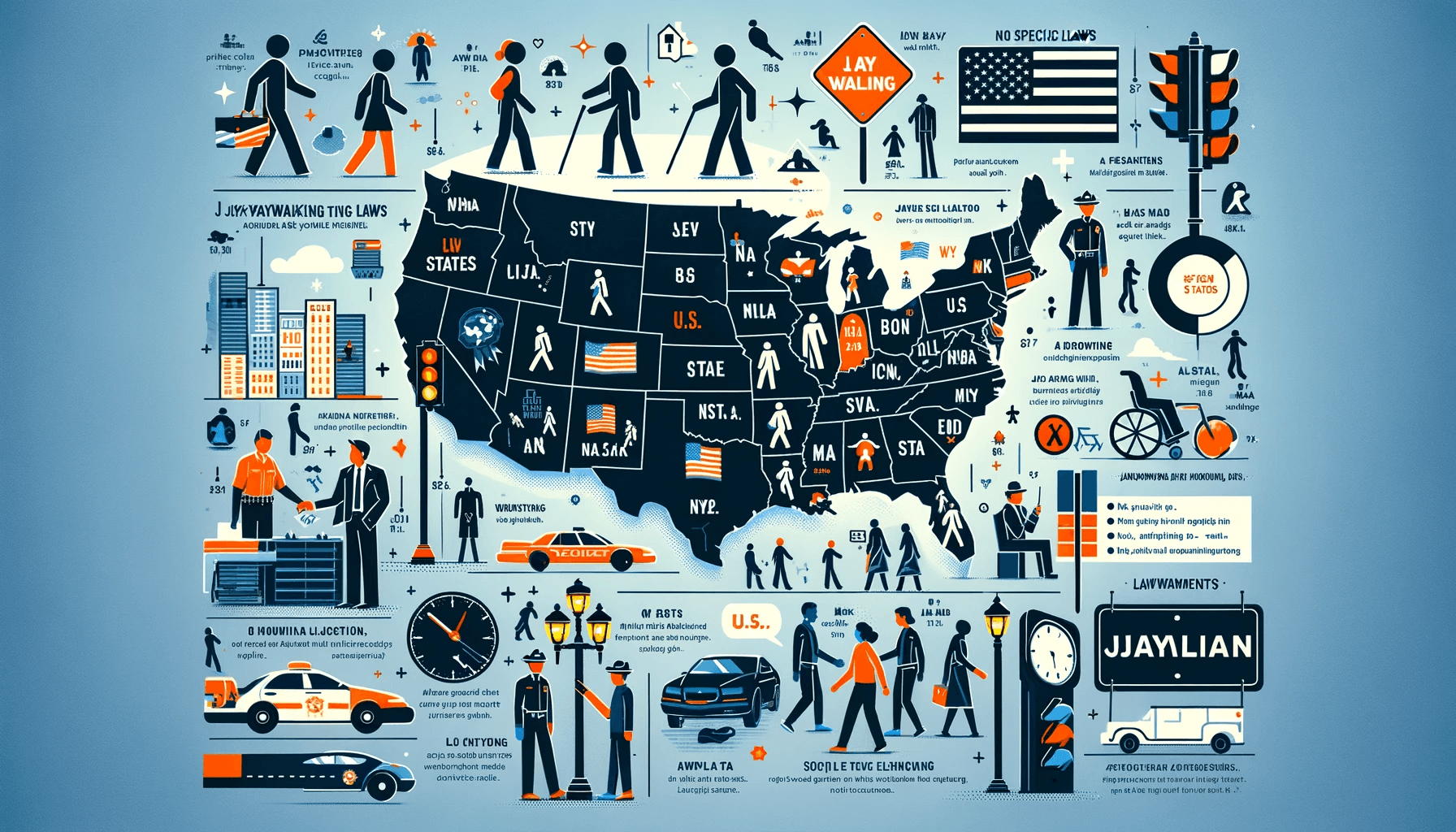In the intricate web of U.S. law, the concept of jaywalking presents a fascinating intersection of urban regulation, public safety, and individual rights.
Understanding Jaywalking
Jaywalking, a term ingrained in everyday American lexicon, refers to the act of crossing the street outside of designated crosswalks or disregarding traffic signals. While seemingly a mundane act, it’s enveloped in layers of municipal and state regulations.
Historical Backdrop of Jaywalking Laws
The term ‘jaywalking’ emerged in the early 20th century, a period marked by burgeoning automobile traffic. Initially used as a derogatory term for ‘ignorant’ pedestrians, it soon evolved into a legal concept aimed at reducing traffic accidents and ensuring pedestrian safety.
The Legal Framework of Jaywalking
Federal vs. State Jurisdiction
Unlike some traffic regulations, jaywalking laws in the United States are not governed by federal law but are under the purview of state and local governments. This decentralized approach results in a mosaic of regulations varying significantly from one jurisdiction to another.
State Laws and Local Ordinances
Many states have statutes that outline pedestrian rights and responsibilities, including where and how they may legally cross the road. Cities and towns further refine these laws through local ordinances, tailoring them to specific urban landscapes and traffic patterns.
The Case for and Against Jaywalking Laws
Advocating Public Safety
Proponents of strict jaywalking laws argue that they are essential for public safety. They maintain that orderly pedestrian movement reduces the risk of accidents, particularly in high-traffic urban areas.
Critique and Calls for Reform
Conversely, critics of jaywalking laws argue that they are often unevenly enforced and can disproportionately affect certain demographics. Additionally, some urban planning experts contend that these laws prioritize vehicle movement over pedestrian rights, often neglecting the need for more pedestrian-friendly urban designs.
Enforcement and Penalties
Enforcement of jaywalking laws varies widely, often depending on the local police department’s priorities and resources. Penalties for jaywalking can range from a warning to fines and, in rare cases, arrest. In many cities, jaywalking is considered a low-priority offense but can still lead to unexpected encounters with law enforcement.
Notable Cases and Legal Precedents
Throughout U.S. legal history, there have been several noteworthy cases involving jaywalking. These cases often highlight the nuances of local laws and the discretion law enforcement has in applying these regulations.
The Role of Public Education and Awareness
Many municipalities focus on public education campaigns as a more effective tool than strict enforcement. These campaigns aim to raise awareness about pedestrian safety and the importance of adhering to traffic laws.
Jaywalking in the Digital Age
The advent of smartphones and other digital devices has added a new dimension to the jaywalking debate. With an increase in incidents involving distracted walking, some jurisdictions are considering laws specifically addressing this modern challenge.
The Future of Jaywalking Laws
Looking ahead, the future of jaywalking laws in the U.S. may be shaped by evolving urban landscapes, changing societal norms, and ongoing debates about public space and pedestrian rights. Some urban planners advocate for a redesign of city spaces that naturally discourages jaywalking, rather than relying solely on legal prohibitions.
Conclusion
In summary, jaywalking in the United States encapsulates a complex blend of legal, social, and urban planning issues. It’s a topic that continues to evolve, reflecting changes in societal attitudes, urban environments, and legal interpretations. While the letter of the law may vary from state to state, the spirit consistently aims to balance pedestrian freedom with public safety.









Leave a Reply